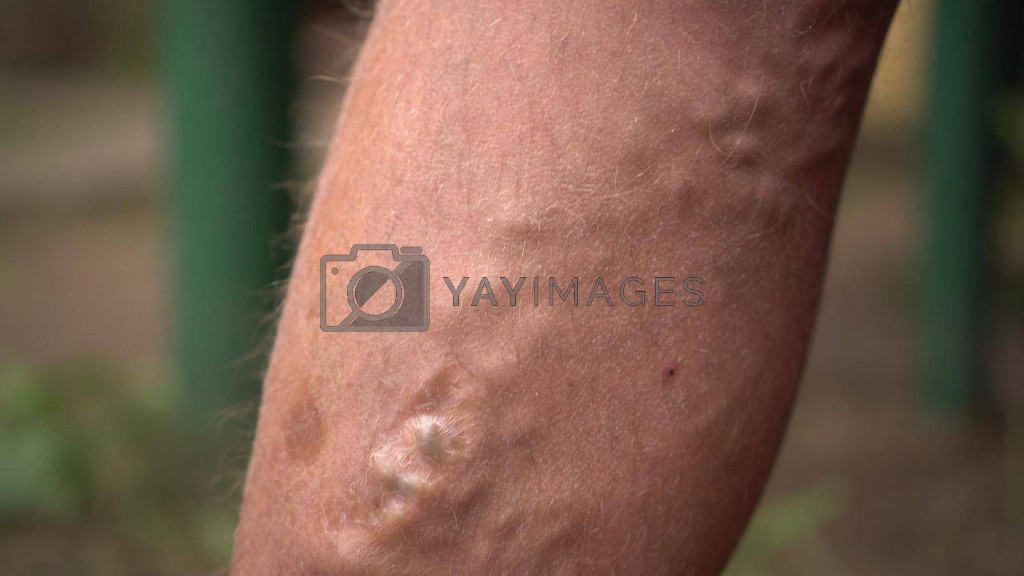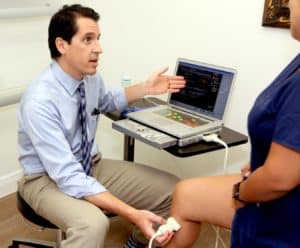Spider and varicose veins are both types of vein problems that can cause pain, swelling, and discoloration in the leg veins. But they have very different causes and treatments.
Whereas both vein diseases affect either gender, they’re more common among women than men. For instance, spider veins affect nearly 50% of women aged 49-50 years and 75% of those aged 60-70. On the flip side, 41% of women over 50 have varicose veins.
But what exactly causes spider veins vs varicose veins, and what treatment options are available for each condition? Let’s take a closer look at the key differences between these two conditions.
What Are Spider Veins?
The term “spider veins” refers to small red or blue blood vessels that appear on the surface of your skin as tiny bumps or lines. They often occur near your ankles, knees, or feet but can also be found elsewhere on your body. These veins are most commonly seen in people who’ve had long periods of standing or sitting.
Spider veins are not dangerous, but they may make you self-conscious about your appearance. If you notice any changes in the color or size of your veins, it may be time to talk to a vein specialist about them.
Spider veins usually don’t require medical attention unless they become painful or swollen. However, if you do notice any symptoms such as leg cramps, burning, itching, swelling, or possible blood clots, see your vein doctor right away. Your doctor will check your legs to determine whether you need further testing or treatment.

How Do You Get Spider Veins?
Spider veins typically form when new healthy veins and blood vessels grow too close to other nearby ones. This happens because the walls of your veins are weaker than the rest of your tissue. When this occurs, the weakened vessel wall is prone to tearing, allowing blood to leak into surrounding tissues. Over time, this process leads to the formation of spider veins, abnormal veins or superficial veins.
Spider veins tend to develop in areas with less movement, such as your calves, thighs, and ankles. Because of their location, these areas are especially susceptible to damage from prolonged periods of inactivity.
Other factors that increase your risk of developing spider veins include being overweight, having diabetes, smoking, hormone therapy use (such as oral contraceptives), pregnancy, and certain medications. In addition, some people inherit a genetic predisposition toward forming spider veins.
How Can I Treat Myself?
If you want to treat yourself, try one of the following methods:
- Exercise regularly. Regular exercise and maintaining a healthy weight helps strengthen your muscles, making it easier to avoid injury. It also improves circulation by increasing the flow of oxygenated blood throughout your body.
- Avoid prolonged periods of inactivity. While sitting, try to get up every hour or so to stretch and walk around.
- Wear comfortable shoes with good arch support. Wearing high heels or tight shoes that squeeze your toes can pressure your deeper veins and cause them to bulge.
- Use an elastic bandage or compression stocking to help keep your calf muscles relaxed. Compression stockings provide extra support for your veins without restricting your mobility.
- Drink plenty of water. Water flushes toxins through your system, helping prevent clots and keeping your heart healthy.
- Eat foods rich in omega-3 fatty acids. Omega-3 fatty acids have been shown to reduce inflammation and improve blood flow. Foods rich in omega-3 fats include fish, walnuts, soybeans, and flaxseed oil.
What Is The Best Way To Remove Spider Veins From Legs?
Some ways to remove spider veins from your legs include laser treatments, sclerotherapy, and surgery. Before pursuing a particular treatment option, it helps to consult an experienced veins specialist who will diagnose your specific condition and recommend the best course of action to guarantee results.
What Are Varicose Veins?
Varicose veins are enlarged, twisted, and sometimes bluish veins that occur near the surface of your skin. They’re often found on your lower legs and may cause pain, swelling, itching, or bleeding.
While varicose veins aren’t dangerous, they can make everyday activities like walking more difficult. If left untreated, varicose veins can lead to chronic venous insufficiency, venous disease, or deep vein thrombosis, which causes leg cramps, fatigue, and other symptoms.
Causes Of Varicose Veins
The most common cause of varicose veins is heredity. However, many cases are caused by long-term standing, obesity, poor diet, lack of physical activity, and aging. Other factors that contribute to varicose veins include:
- Hormonal changes associated with menopause
- Pregnancy
- Use of birth control pills containing estrogen
- Smoking
- Chronic conditions such as diabetes and lupus
Treatment Options For Varicose Veins
The first step in treating varicose veins is to identify the source of the problem. This includes determining whether the veins are superficial or deep and what type of vein they are (varicose or telangiectatic). Once this information has been gathered, your doctor may suggest one of several treatment options:
- Laser Treatment. A minimally invasive procedure using a special light beam called a laser, laser treatment uses heat energy to destroy the damaged tissue and shrink the veins. Laser therapy works well for superficial varicosities but not large, deeply embedded ones.
- Sclerotherapy. Also known as phlebectomy, sclerotherapy involves injecting a chemical solution into the affected area. While sclerotherapy is effective at shrinking the veins, it’s also pretty painful and requires multiple injections over time. It’s typically used when the veins are small and located close to the skin’s surface.
- Surgery. In extreme cases, surgery is necessary to repair damaged veins. Your doctor may perform a surgical procedure called ambulatory endovenous ablation, where a catheter is inserted into a vein in your arm and threaded under the skin to reach the problematic veins. Then, a tiny wire loop is attached to the catheter and heated until the vein collapses.
Contact East Bay Vein Specialists Today!
So there you have it! Whether you’re struggling with symptoms of spider veins vs varicose veins, there’s a solution for every situation. At East Bay Vein Specialists, we’re a team of California’s top-rated vein doctors committed to providing our patients with compassionate care and personalized attention. We offer comprehensive services designed to help you feel better about yourself again—and get back to living life without worry. To learn more about how we can help you achieve healthy, beautiful veins, please contact us today!
SOURCES



